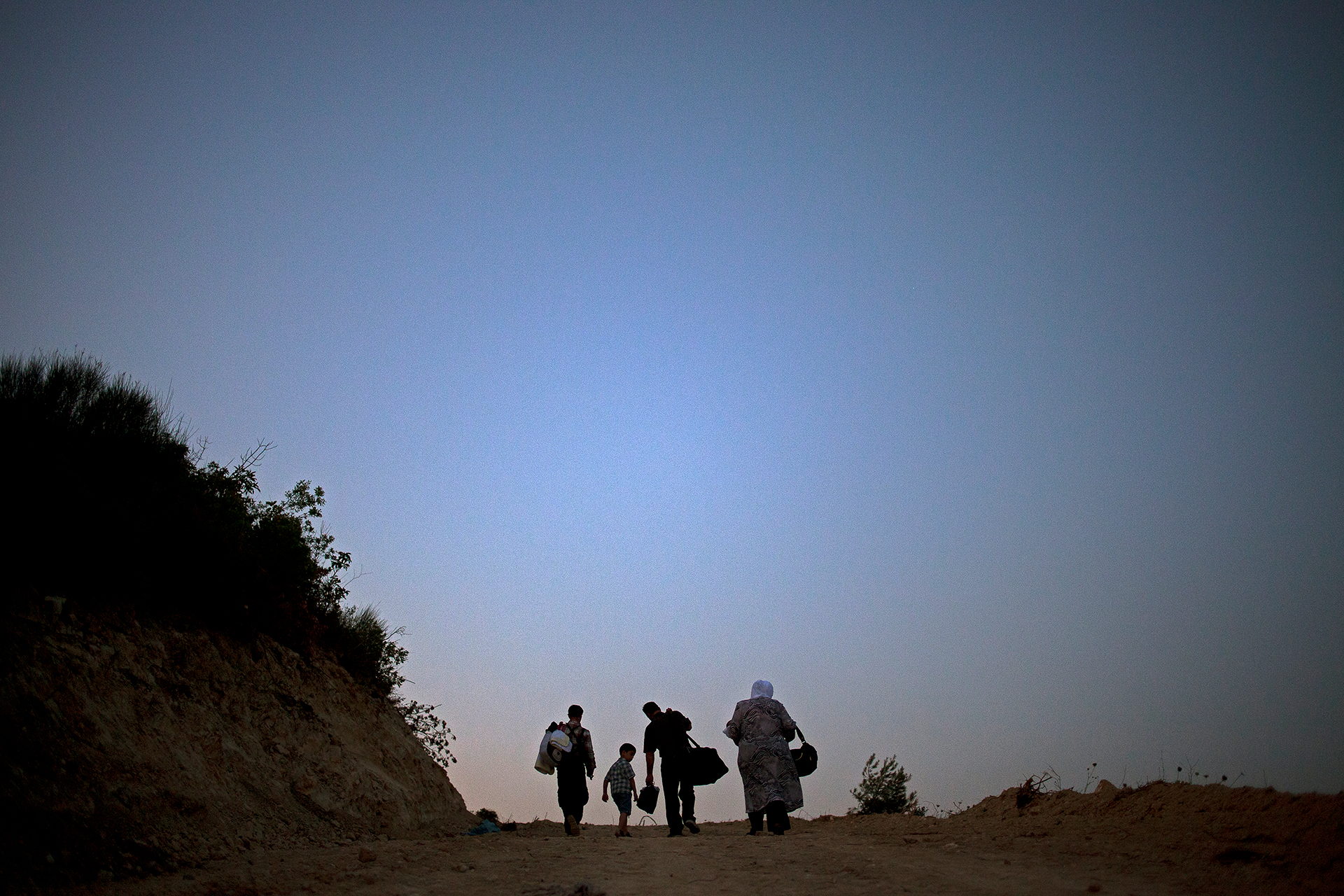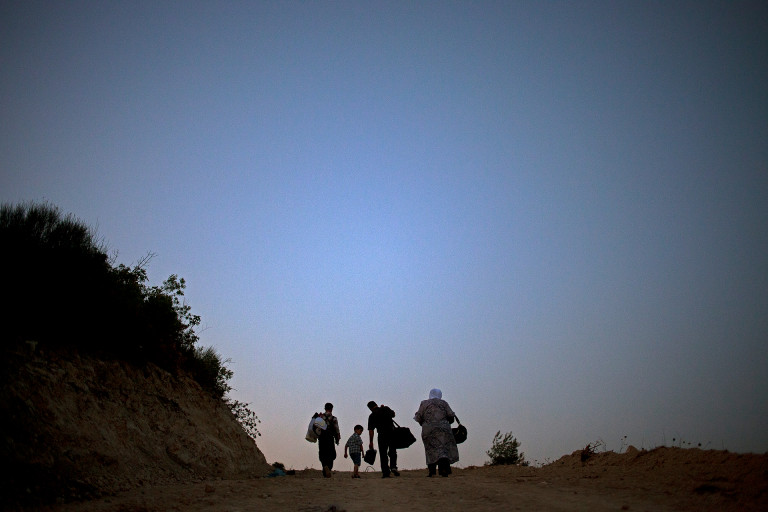
In Marvin Heiferman’s seminal collection Photography Changes Everything, we see how over many decades images have changed what we want, what we see, who we are, what we do, where we go, and what we remember.
In recent times, the abundance of images has helped drive the catalytic effects of photography. With hundreds of millions of photos posted daily on Facebook, four billion images shared on WhatsApp every day, and one trillion Snaps sent each year, annually the amateurs of this world make and circulate ten times the number of images produced in 100 years of film photography. For professional photographers and visual storytellers this poses the considerable challenge of what role their work plays in the global visual economy. It is an issue often addressed through some tacit assumptions about how images work bolstered by repeated references to well known examples.
There is a common story in photojournalism about how pictures change history and the world. For example, in April 2017 when President Trump launched a missile attack on Syria following visual reports of chemical weapons attacks on civilians in Khan Shaykhun, a photo editor for a major news agency tweeted “Images really can change the world. #SyriaStrikes.” This claim, assuming a linear and causal relationship connecting pictures directly to policy, emerges periodically in response to powerful visualisations of significant events. Indeed, in the 1990s analysts spoke of the “CNN effect”, the idea that global media coverage of conflicts and humanitarian crises was heavily influencing foreign policy action. In the context of Syria, this argument has at times been prompted by the attention given to the images of Alan Kurdi, Omran Daqneesh, and “Caesar’s” torture archive. And, yet, because the Syrian civil war continues to this day, it is probably more accurate to conclude that, along with hundreds of thousands of civilians, the “CNN effect” died in Syria.
How pictures might affect opinion, policy and action remains one of the most significant issues for photography and goes well beyond Syria. We have seen this question emerge in the New York Times’ transparent decision to use a stereotypical famine image of a seven year old girl, Amal Hussein, on the front page to highlight the humanitarian disaster in Yemen. We see it in the contention that the Covid-19 pandemic requires “iconic photographs” of the dead to scare people into adopting public health measures. And when one commentator wrote that the graphic image of Óscar Alberto Martínez Ramírez and his daughter, Valeria, drowned in the Rio Grande as they attempted to cross into the US, was likely to be “Trump’s Napalm Girl” because of the way it defined a tipping point of the presidency, we can see how icons from the history of photojournalism continue to influence thinking on this topic.
This issue is best approached through the concept of impact. What is impact, how can we conceptualise it, and how can a better understanding help photographers in their work? To move some of these debates forward we need a better understanding of what impact means and how it is achieved. In this series of three posts, I want to delve into this issue of how we should think carefully about impact and what this means for visual work both anchored in and directed towards the world.
In this first post, I look at what makes up the idea of impact, drawing on work from outside photography. The second post will look at some well-known examples from the Vietnam War which have shaped the photographic discourse on impact in a way that I will argue constrains our understanding, and the third post will look at a contemporary example to see how a better take on impact could help professional photographers shape and evaluate their projects.
Of course, not every image maker nor every visual project needs to reassess what impact means and how it can be achieved. It all depends on how one thinks about the purpose of the work being undertaken. The issues discussed here are most salient to those who undertake work they hope will be socially relevant, possibly leading to changes in the areas they are documenting. These issues are also significant for analysts who want to evaluate visual stories once they are completed and circulating.
Theory of Change: Understanding effects versus impact
To think through the concept of impact we need to draw on areas outside of photography, and the use of engagement metrics in contemporary media and a recent trend in financial management – impact investing – offer helpful sources.
To have impact is to have a marked effect or influence on something, and the influence understood as impact is the result of a causal relationship. While impact can be an unintentional, unplanned, and unforeseeable consequence, especially in the realm of the visual, where people read images in many and varied ways, it can be thought about more systematically. For socially relevant work and better commentary, it needs to be thought about more systematically.
To do that we need to draw a contrast between outputs and outcomes. In impact investing, where money managers want to generate positive change through an investment, having impact implies “but-for causation” and is counterfactual, meaning outcome X would not have happened but for a particular input generating a particular output. This is also understood in impact investing as “additionality”, which considers whether or not desired social outcomes would have occurred anyway regardless of the investment. To have impact requires having contributed something in addition to existing circumstances, thereby producing a different outcome. Getting to grips with this requires us to distinguish between effects and impact.
Detailing the causal relationship that leads to impact – establishing the “but-for causation” linking inputs and outcomes – often involves quantitive measurements. But it is here that outputs (media effects) are often confused and conflated with outcomes (media impact). This is especially the case in journalism where data about reach and engagement has become a way of allegedly assessing the impact of reporting. Indeed, there is now an audience engagement industry that tries to quantify the influence of media stories. Using metrics that can be found through services like Google Analytics, these include the number of visitors to a site, bounce rate, page views, time on page, likes, shares, downloads, and comments, amongst others. (While these measures relate to online activity, there is similar data for offline and material events such as book publication and exhibition tours). All of these metrics have their place, but their unit of analysis is the individual, they are short term, their currency is attention, and their effect is exposure.
By themselves, however, these effects do not change outcomes. The Alan Kurdi photograph, for example, attracted rapid attention on social media, produced in the short term a change in language from “migrant” to “refugee” in European media, and prompted politicians to express their outrage. But those measurable effects did not in the longer term transform state policy towards migrants and refugees fleeing Syria.
Of course, there can be no impact without many of these effects – if a picture or story is never seen it logically cannot exert any influence – but these effects should not be understood in terms of impact, and they do not automatically lead to impact. Impact generally involves the macro rather than the micro, and its horizon is more long term. To have impact involves changing the attitudes and beliefs of individuals in a community in such a way that this makes possible broader changes at the levels of institutions, practices, and policies. Evidence for these changes will draw on quantitative data about media effects, but it requires sustained qualitative analysis. In this context, it is surprising that, at least to my knowledge, there has been little systematic effort to undertake audience surveys and interviews (of the kind done by the Media Impact Project) to see how a photographic project might have helped contribute to change in its area of concern.
To better conceptualise how impact is achieved we can think in terms of a model increasingly common in the NGO sector as a tool for planning and evaluation, the Theory of Change. A Theory of Change is a logic model that maps out the causal connections of input → activities → output → outcomes → impact. It represents a planning process where activity is mapped backwards from the desired impact to the conditions that can help deliver that impact. As a thought process, a Theory of Change has to simplify the many and varied dimensions of causality between its constituent elements. Nonetheless, it could become a significant part of collectively preparing and evaluating socially relevant projects by making clear that outputs (measurable effects) are the necessary but insufficient conditions of impact.
In the end, impact analysis is itself a form of reporting and storytelling, citing quantitative and qualitative data to build a narrative, using the methodology of a Theory of Change. Most importantly, it goes beyond a concern with media effects to assess the longer term influence of visual stories. In most cases impact analysis cannot prove that particular activities and outputs definitively led to broader changes, but its account can offer a much more complex understanding of how change requires more than attention and exposure.
David Campbell
4 May 2021
